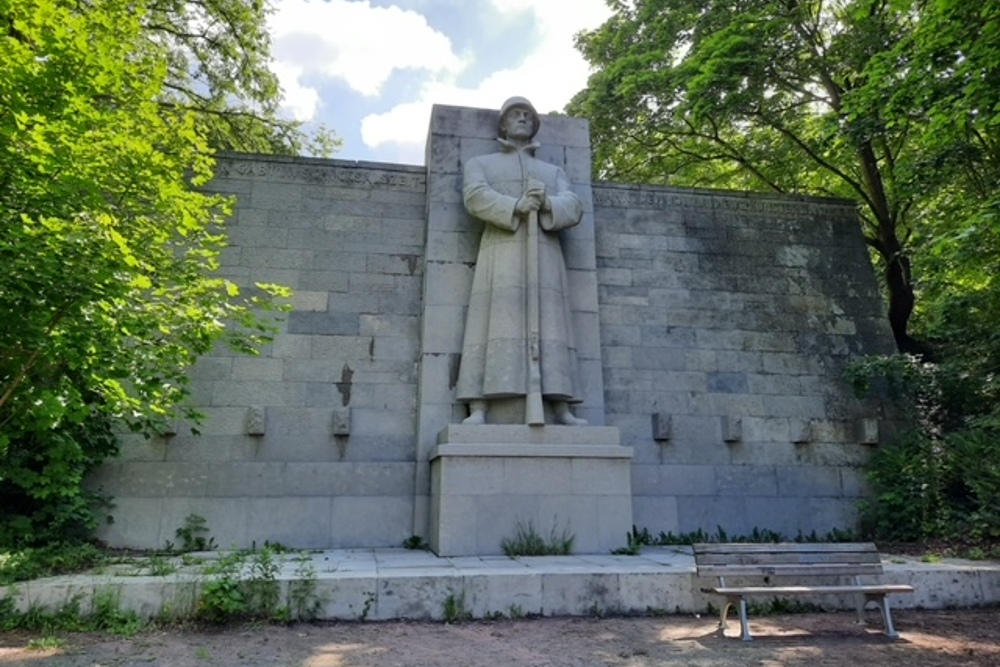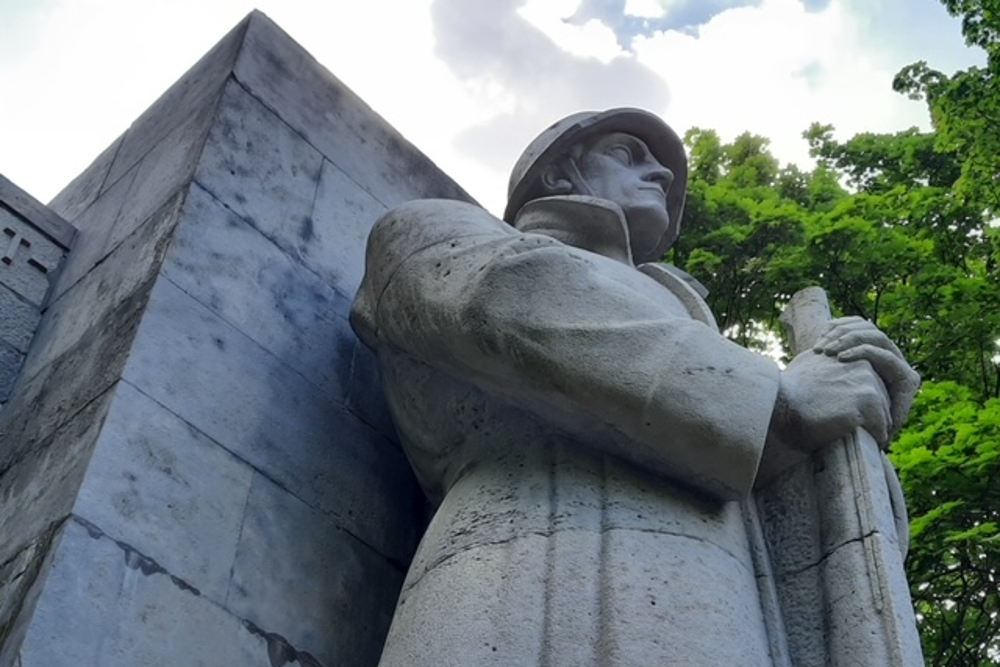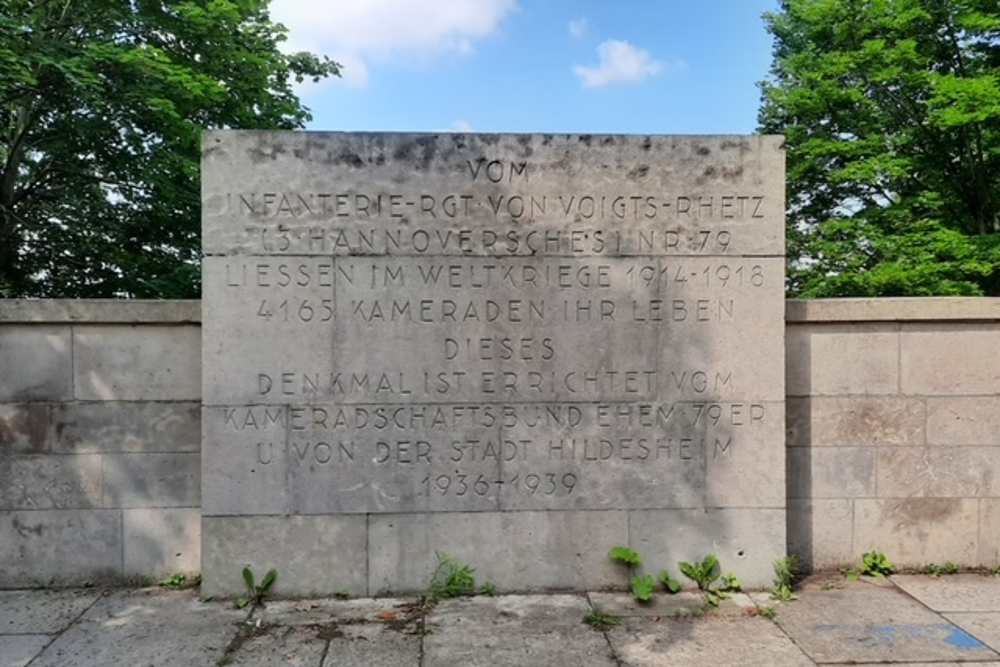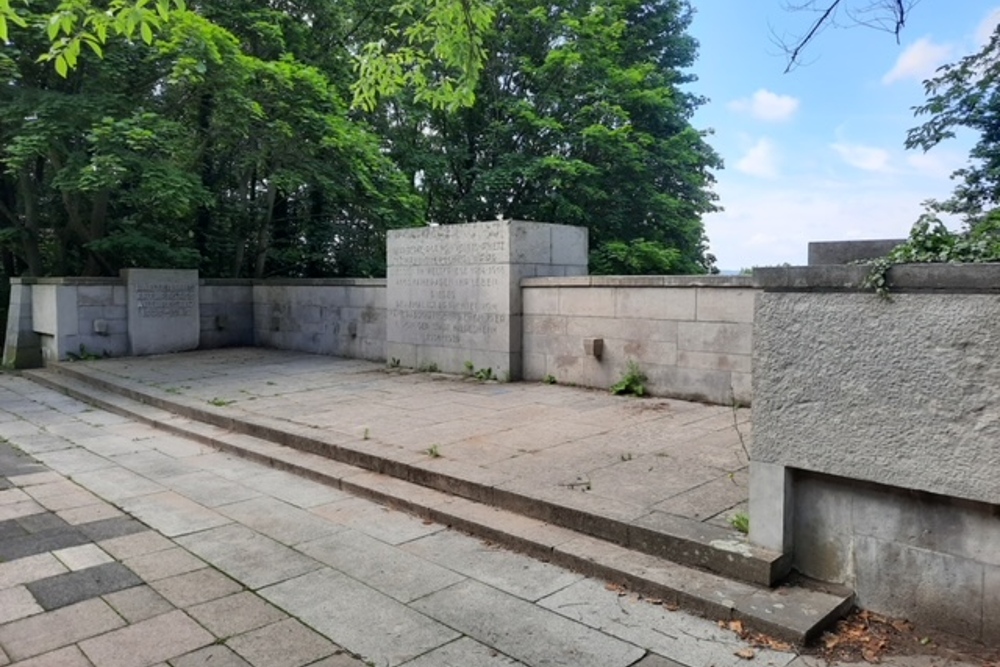War Memorial Hildesheim
This memorial commemorates the residents of Hildesheim who died in the First and Second World War.
War memorial on the Gelgenberg, Hildesheim.
The monument commemorates the soldiers of the 79th ‘Voigts Rhetz’ Infantry Regiment (3rd Hanoverian) who died in World War One. It was commissioned and funded by the regiments alumni association (Kameradschaftsbund der ehemaligen 79er) after they were dissatisfied with the existing memorials in Hildesheim. Construction began in 1938 and was. completed in 1939. The unveiling ceremony on 11 June was attended by a large crowd and, though the main speech was given by the mayor of Hildesheim, the monument was intended only as a regimental memorial rather than one for the city.
A site on the slope of the Galgenberg was selected, in a small park at the end of the Feldstraße parade route. The monument is on two sides and two levels, with the main honour court on the upper level facing east at the level of todays Mozartstraße. The court forms a platform 14 meters long and 4 meters deep. The dedication inscription is recorded on a block in the middle of the parapet wall:
"For the 4165 comrades of the Infantry Regiment von-Voigts-Rhetz’ (3. Hannoverian) No. 79 who lost their lives in World War 1914-1918. This monument is erected by the camaraderie federation of former 79ers and the city of Hildesheim 1936-1939."
This parapet is the top of a high retaining wall that drops several meters down on the west side, decorated in its centre by the colossal statue of a soldier. The lower level is reached by pathways on the north and south sides. The soldier, standing on a tall plinth, is 5.7 meters tall and wears a greatcoat, steel helmet and rests his hands on his rifle in front of him as if he was on guard duty. His rigid pose and stern expression were intended to symbolise the ‘ideal’ image of a soldier. The statue was placed on the west side in order to face towards the Western Front, where the regiment suffered its greatest loses in WW1. The monument was originally intended to have statues of two soldiers to signify the comradeship of the regiment, but this was soon changed to one soldier to reduce costs.
At the top of the wall, on either side of the soldier, is carved a quote from the poet and Prussian officer Hans von Felgenhauer:
"Those you gave life in fatetime won immortality to the people and you" a quote from the poet Hans von Felgenhauer.
On the ends of the retaining wall are carved the regiment’s combat areas of the First World War: Belgium 1914-1917 and Russia 1915-1916/1917 on the north.
Galicia 1915-1916/1917 and France 1914-1918 on the south.
While the regiment suffered 148 officers, 431 non-commissioned officers and 3,586 enlisted ranks killed on the Western front, and despite the large amount of available space, no names are listed on the monument. In 1956 memorial plaques for the units of Panzergrenadier Regiment No. 59 were added at the north and south ends of the parapet on the honour court by that regiment’s association.
Do you have more information about this location? Inform us!
Source
- Text: Fedor de Vries, Andrew Pegler
- Photos: Andrew Pegler








